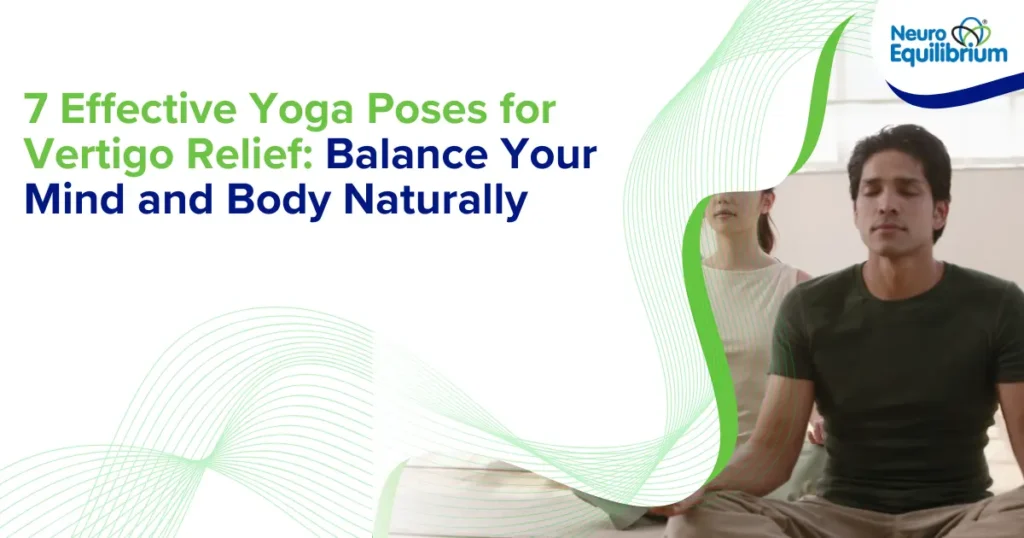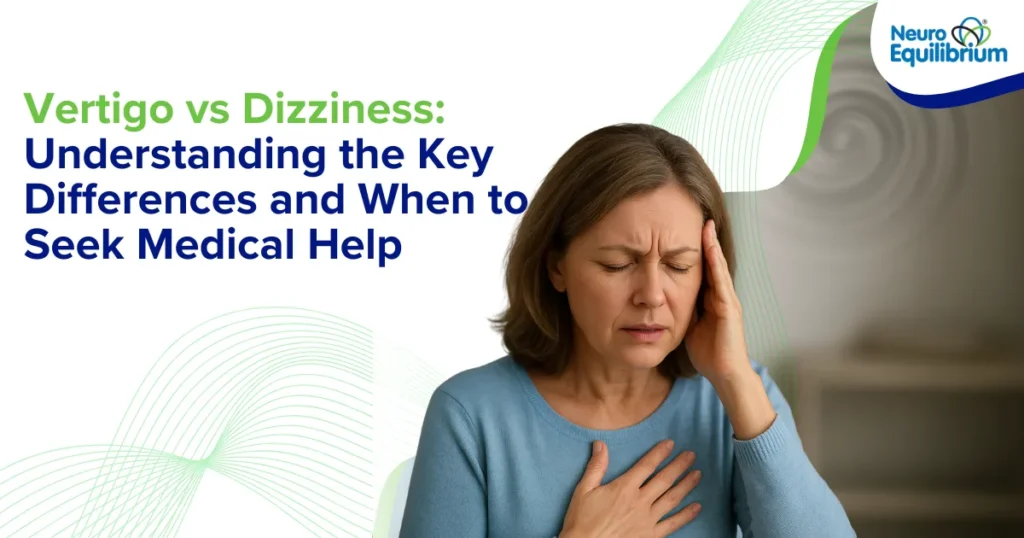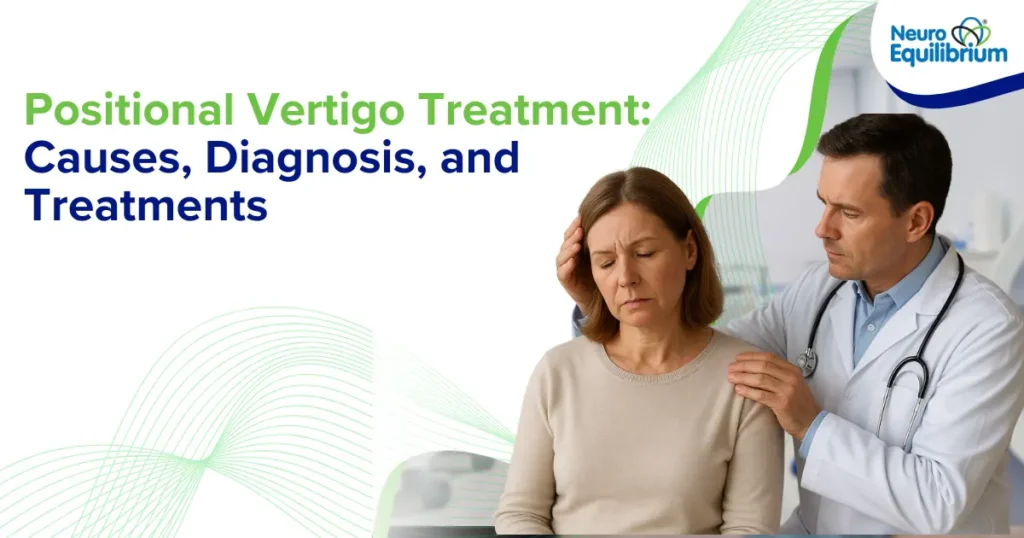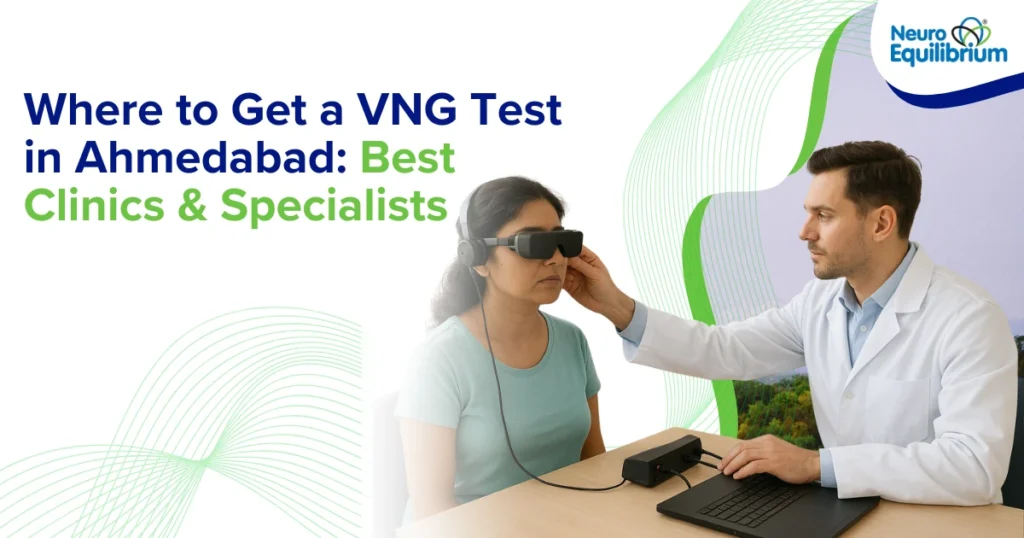Vertigo can be very unsettling, especially when simple actions like turning your head, getting out of bed, or looking up make the world feel as if it’s spinning. Although some causes of vertigo like BPPV involve special medical procedures, including crystal reposition movements and vestibular rehabilitation therapy, simple yoga may be very helpful as a supporting factor of recovery. Yoga helps relax the nervous system, ease stress and anxiety, release tension in the neck and shoulders, and gradually improve balance.
However, yoga is not a direct cure for vertigo. This practice should be used as a supplement to a correct diagnosis and specific treatment plan. Clinics such as the NeuroEquilibrium provide advanced testing on the vestibular and customized therapy to cure the cause of dizziness. When the cause of your problem has been controlled, then yoga will teach your body to have confidence, steadiness, and ease when doing daily movements.
Know More About Vertigo
- Vertigo Exercises And Home Remedies
- Why Some Vertigo Treatments Don’t Work the First Time
- Vertigo Symptoms: A Complete Guide for Patients
Why Do People Get Vertigo?
Vertigo is not a disease in itself. It is a symptom that arises when there is a problem with the inner ear, the nerve of the balance or certain sections of the brain, which control balance.
A very common cause is BPPV (Benign Paroxysmal Positional Vertigo). In this condition, tiny calcium crystals inside the inner ear slip out of their proper position. They have moving crystals which make them spin abruptly as you turn your head.
The other cause is the Vestibular Migraine whereby the sense of feeling dizzy is a result of the distortion of the nerve impulse in the brain. It can occur even without a headache.
This condition, called Ménière’s disease, occurs when excess fluid builds up in the inner ear. It can result in vertigo, ringing ears and hearing loss.
Vestibular neuropathy is a condition of the ear to the brain equilibrium nerve, which becomes inflamed in an instance of sudden and severe vertigo.
It is extremely crucial to have the right diagnosis because of the causes of vertigo that are different. In order to identify the location of the inner ear lesion affected and the specific reason behind the vertigo, NeuroEquilibrium vertigo centers carry numerous balance tests, such as Videonystagmography to track eye movements, Dynamic Visual Acuity tests to measure the coordination between the eyes and the ears, and balance platform tests and specific positional tests.
At good vertigo clinics like Neuroequilibrium, testing is followed by the development of an individual treatment plan by doctors. It may include re-positioning (including the Epley maneuver) to fix BPPV, Vestibular Rehabilitation Therapy (VRT) to practice balance, balance training using virtual reality, prescription of drugs when needed, stress counseling or CBT to long-term dizziness, and lifestyle/diet education.
Yoga can be added to support recovery, especially for managing stress and improving balance and confidence.
How Yoga Helps Vertigo
Yoga helps improve coordination between the mind and body. When done in a gentle yet consistent way, yoga is able to:
- Increase stability and equilibrium.
- Lessen the stress and anxiety that are likely to worsen vertigo.
- Use tight neck muscles.
- Increase blood circulation to the inner ear and the brain.
- When healing, bear up the balance system.
When yoga is used alongside proper medical treatment, individuals are likely to realize that their dizziness is not as widespread as they thought and can be managed successfully.
7 Effective Yoga Asanas for Vertigo Relief

1. Tadasana (Mountain Pose)
This pose helps improve posture and grounding.
How to Do It:
- Stand straight with your feet together.
- Keep shoulders relaxed
- Visualize yourself growing tall and steady like a mountain.
- Breathe deeply for 8–10 breaths.
Benefits: Enhances body alignment and balance.
2. Vrikshasana (Tree Pose)
Helps train your brain to maintain balance.
Steps:
- Stand tall
- Place one foot on the opposite inner thigh
- Balance gently and hold for 10–15 seconds
- Switch sides
Benefits: Strengthens leg muscles and stabilises the vestibular system.
3. Matsyasana (Fish Pose)
Opens the chest and improves oxygen flow.
Steps:
- Lie on your back
- Lift the chest upward
- Bend your head backwards (do not do it when it causes dizziness)
- Hold for 10 seconds
Benefits: Relaxes body tension and supports breathing.
4. Shavasana (Corpse Pose)
This is a deep relaxation pose.
- Lie down flat
- Flex arms and legs partially.
- Close your eyes and breathe naturally.
Pros: Anxiety is one of the primary causes of vertigo and is reduced by this.
5. Balasana (Child’s Pose)
A pose that relaxes both the mind and the nervous system.
- Sit on your knees
- Bow down and place your forehead on the ground.
- Breathe slowly for 1–2 minutes.
Advantages: Assists in decreasing dizziness and stress.
6. Paschimottanasana (Seated Forward Bend)
- Sit with legs stretched
- Curvature round, and seize your feet.
- Hold and breathe deeply.
Benefits: Improves blood circulation and relaxes the spine.
7. Pranayama (Deep Breathing)
Particularly, the Anulom Vilom and Bhramari are helpful in the inner ear and brain relaxation.
- Sit comfortably
- Inhale and exhale slowly
- Continue for 3–5 minutes
Advantages: calms nerves and enhances the blood flow to the brain.

Important Safety Note
Due to the variety of the conditions that may result in vertigo, the most significant one is proper diagnosis. Home remedies or simple dizziness medicine can only offer short term relief but does not tend to address the issue of the root cause. In NeuroEquilibrium, the experts apply the technology of balance testing to determine the specific cause and, thus, provide effective and permanent treatment.
Antihistamine drugs ought to be used as temporary. Their prolonged use may become a hindrance to the normal recovery of the brain. The movements and exercises should be done slowly as well since the head turns fast can make one feel dizzy.
Repositioning maneuvers, such as the Epley Maneuver, can effectively treat BPPV, but they should only be done after a proper diagnosis. Performing the wrong maneuver, or doing it incorrectly, can make symptoms worse.
Seek emergency medical care immediately if vertigo occurs with any of the following:
- A sudden severe headache
- Blurry or double vision
- Difficulty speaking
- Weakness or numbness in any part of the body
- Sudden trouble walking or poor coordination
These may be signs of a serious medical condition.
Services That Can Support Vertigo Recovery
Vertigo recovery often works best when several types of care are combined.
1. Medical and Diagnostic Care
Specialists such as ENT doctors and neurotologists may perform detailed balance testing. At NeuroEquilibrium, tests like Videonystagmography (VNG), Dynamic Visual Acuity testing, and postural balance assessments are used to locate the source of the dizziness.
2. Physical and Mechanical Treatment
After tracking down the cause, treatment can commence. In the case of BPPV, the maneuvers used include crystal repositioning to reorient the crystals of calcium back to the appropriate location within the inner ear. It varies on the kind of maneuver depending on the canal that has been affected.
3. Vestibular Rehabilitation Therapy (VRT)
This aids the brain in adapting as well as balancing. Virtual Reality based balance training methods are also used in many NeuroEquilibrium clinics and make exercises more interesting and facilitate faster recovery.
4. Support for Mind and Lifestyle
For those with prolonged dizziness or movement-related anxiety, Cognitive Behavioral Therapy (CBT) can help reduce fear and build confidence. In case the anxiety is exacerbating symptoms, stress management methods and guided breathing can be used. Diet changes and sleep schedule assistance could also be provided as lifestyle advice.
Gentle activities such as yoga or Tai Chi can be helpful for balance and relaxation, but they work best alongside proper vertigo treatment, not as a replacement for medical care.
Conclusion
Vertigo can be difficult to live with, but recovery is possible with the right approach. Mellow activities such as yoga may aid the mind and body through enhancing balance and alleviating stress. But yoga should be combined with good medical diagnosis and individual treatment that will deal with the cause of the dizziness.
In case you are experiencing frequent spins or constant sense of imbalance, NeuroEquilibrium should be consulted. The clinics have a high level of vestibular testing and professional examination as well as proven scientific treatment programs. With proper treatment, you can regain balance, rebuild confidence, and return to your daily routine comfortably.
Can yoga completely cure vertigo?
Yoga is not the diagnosis that would cure vertigo directly since vertigo is a symptom of a different underlying condition. The real reason must be well discovered and resolved to develop permanently. Nevertheless, yoga can be used to lower the level of stress and relaxation of the nervous system, which can reduce the number or severity of dizziness. It can be most effectively applied as a complement to adequate medical treatment.
What is the best exercise for vertigo?
The most effective exercise would be based on the cause of the vertigo. In the case of BPPV, there are designated repositioning movements that are most effective since they help the inner ear crystals to get back to their original positions. To make continuous improvements on balance, the Vestibular Rehabilitation Therapy assists the brain in adapting and stabilizing the movement. Gentle yoga or Tai Chi may work to improve coordination as well as the reduction of stress.
Should I do yoga while I feel dizzy?
No, the practice of yoga cannot be performed in the case of active spinning or lack of balance. In case of dizziness, the best thing that one can do is to sit or lie down and avoid sudden changes to avoid falls. After the spinning is over, and you feel firm, you can resume the easy things little by little. Yoga is to be practiced in case you are stable and confident in your movements.
How long does vertigo usually last?
The time taken to recover is dependent on the cause. When the appropriate repositioning maneuver is carried out, BPPV can be cured in a short period, although some residual mild imbalance may persist a few days or weeks. The other causes can be classified as vestibular migraine or chronic dizziness and are not easily cured quickly but rather gradually with constant treatment and lifestyle change. Development might be gradual yet should take time.
Can yoga play a role in recovery?
Admittedly, yoga can aid recovery because it helps to alleviate stress, enhance a smooth breathing process, and enhance the awareness of posture and balance. Although it does not cure the mechanical cause of vertigo, it makes the body feel less central and responsive to triggers. Yoga can be used together with adequate medical and vestibular therapy to improve movement stability and confidence.















